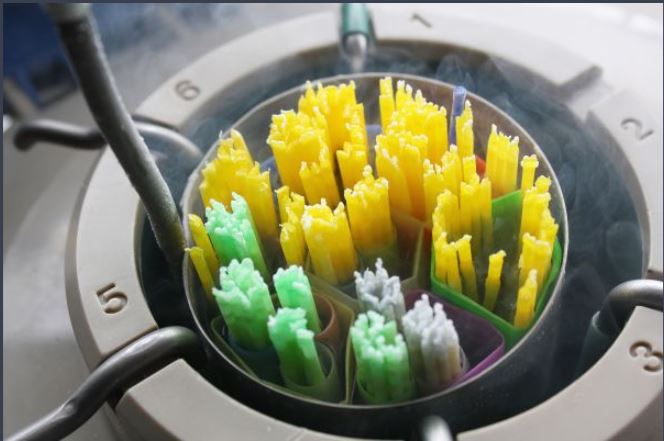‘Pregnancy results of frozen semen for Friesian horses are almost as good as compared to the use of fresh, cooled semen’, Doeke Hoekstra has experienced. Techniques for freezing semen have improved and the technique for inseminating mares is constantly getting better too.’ He declares that there is no need for breeders to feel apprehensive about the use of frozen semen for Friesian horses. ‘When the semen is of good quality and supervision of the mare is optimal there is no difference in pregnancy rates between fresh- or frozen semen.’
70% suitable for freezing
Doeke works in the Van de Lageweg laboratory in Beers, Friesland and is well-acquainted with the fertility of stallions and mares. ‘Every winter we collect and freeze semen from a few Friesian stallions here.’ Around 70% of Friesian stallions produce semen that is suitable for freezing, he indicates. ‘Frozen semen of about 30% of these stallions is of very high quality’, Doeke states. Examples are stallions such as Jehannes 484, Tsjalle 454, Nane 492, Ulbe 505 and Matthys 504. ‘Many mares the world over have become pregnant with frozen semen from these stallions.’ By saying this he also highlights one of the major advantages of frozen semen. ‘Its storage life is unlimited which makes it perfect for import and export. It provides other countries with opportunities for using approved KFPS Studbook stallions instead of Foal Book stallions.’ Moreover, semen remains available even for stallions that have died. ‘In 1997 we processed frozen semen of the warmblood stallion Nimmerdor and still every year a Nimmerdor foal is born.’
Back-payment pregnancy
There is some difference however in the supervision of mares when using frozen semen. ‘Frozen semen has a shorter life span so the insemination must take place closer to ovulation.’ That makes it a bit more expensive because it requires more intensive supervision by a veterinarian. ‘But in this context too, new insemination protocols are being developed which help to keep costs down.’ To make this option more attractive for both stallion keepers and breeders Doeke recommends agreeing on a relatively low price per sample. ‘Which will be followed by a back-payment when the mare is confirmed pregnant. At first the stallion keeper doesn’t earn much, but he will as soon as the mare is in foal. The benefits are twofold, because the ultimate aim is to get the mare impregnated.’




































